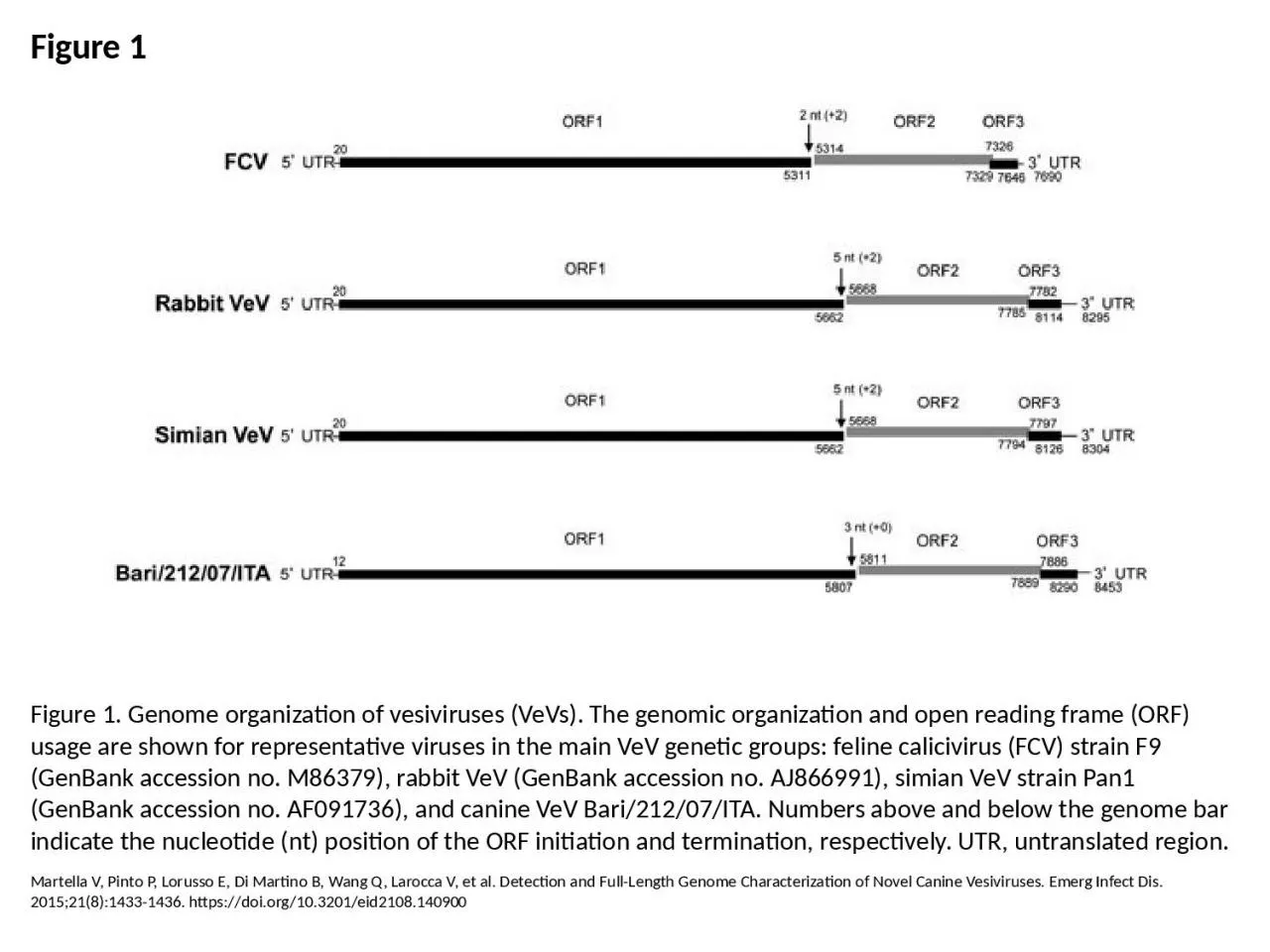

Martella V Pinto P Lorusso E Di Martino B Wang Q Larocca V et al Detection and FullLength Genome Characterization of Novel Canine Vesiviruses Emerg Infect Dis 201521814331436 httpsdoiorg103201eid2108140900 ID: 1000548
Download Presentation The PPT/PDF document "Figure 1 Figure 1. Genome organization o..." is the property of its rightful owner. Permission is granted to download and print the materials on this web site for personal, non-commercial use only, and to display it on your personal computer provided you do not modify the materials and that you retain all copyright notices contained in the materials. By downloading content from our website, you accept the terms of this agreement.
1. Figure 1Figure 1. Genome organization of vesiviruses (VeVs). The genomic organization and open reading frame (ORF) usage are shown for representative viruses in the main VeV genetic groups: feline calicivirus (FCV) strain F9 (GenBank accession no. M86379), rabbit VeV (GenBank accession no. AJ866991), simian VeV strain Pan1 (GenBank accession no. AF091736), and canine VeV Bari/212/07/ITA. Numbers above and below the genome bar indicate the nucleotide (nt) position of the ORF initiation and termination, respectively. UTR, untranslated region.Martella V, Pinto P, Lorusso E, Di Martino B, Wang Q, Larocca V, et al. Detection and Full-Length Genome Characterization of Novel Canine Vesiviruses. Emerg Infect Dis. 2015;21(8):1433-1436. https://doi.org/10.3201/eid2108.140900